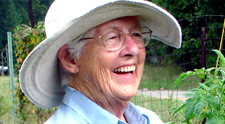Dr. Wolfe is accepting new patients; a referral is recommended.
- MidOhio PainCare

Spinal Stenosis
What Is Spinal Stenosis?
Spinal stenosis is a narrowing or tightening of spaces in the spine that creates pressure on the spinal
cord or the spinal nerve roots. Spinal stenosis usually involves the narrowing of one or more of three
areas of the spine: the central spinal canal through which the spinal cord and nerve roots run, the lateral
recesses of the spinal canal at the base or roots of nerves branching out from the spinal cord, or the side
openings or foramina between the vertebrae through which spinal nerves leave the spine and go to other
parts of the body. Spinal stenosis may involve a small or large area of the spine. Pressure on the lumbar
region of the spinal canal or on spinal nerve roots branching out from the lumbar area may give rise to
pain or numbness in the legs. Pressure on the cervical region of the spinal canal may produce similar
symptoms in the shoulders or arms.
What Causes Spinal Stenosis?
The normal spinal canal provides adequate room for the spinal cord and nerves. Narrowing of the canal,
which occurs in spinal stenosis, may be inherited or acquired. Some people inherit a small spinal canal
or have a curvature of the spine (scoliosis) that produces pressure on nerves and soft tissue and
compresses or stretches spinal ligaments. In an inherited condition called achondroplasia, defective
bone formation results in abnormally short and thickened pedicles that reduce the diameter of the spinal
canal.
In most cases, spinal stenosis results from a gradual, degenerative aging process. Either structural
changes or inflammation can begin the process. As people age, the ligaments of the spine may thicken
and calcify. Bones and joints may also enlarge. When surfaces of the bone begin to project out from the
body, these bone spurs are called osteophytes. When one part of the spine degenerates, it usually
places increased stress on other parts of the spine.
Spondylolisthesis is a condition in which one vertebra slips forward on another. It can come from a
degenerative condition or an accident, or, very rarely, may be acquired at birth. Poor alignment of the
spinal column when a vertebra slips forward onto the one below it can place pressure on the spinal cord
or nerve roots at that place and cause or worsen spinal stenosis.
Osteoarthritis is the most common form of arthritis and is more likely to occur in middle-aged and older
people. It is a chronic, degenerative process that may involve multiple joints of the body. It wears away
the surface cartilage layer of joints, and is often accompanied by overgrowth of bone, formation of bone
spurs, and loss of function. If the degenerative process of osteoarthritis affects the facet joint(s) and the
disk, the condition is referred to as spondylosis. This condition may be accompanied by disk
degeneration and bulging, as well as an enlargement or overgrowth of bone that narrows the central and
nerve root canals causing spinal stenosis.
What Are the Symptoms Of Lumbar Spinal Stenosis?
For many patients, the spinal canal may narrow substantially without producing any symptoms. However,
if spinal stenosis places pressure on the spinal cord or spinal nerve roots, there may be a slow onset and
progression of symptoms. The back may or may not hurt. More often, people experience numbness,
weakness, cramping, or general pain in the legs. Some describe it as a heaviness or tightness. Sitting
or leaning forward often relieve the symptoms because the flexed position "opens up" the spinal column,
enlarging the spaces between vertebrae at the back of the spine.
What Are Some Nonsurgical Treatments For Spinal Stenosis?
In the absence of severe or progressive nerve involvement, the doctor may prescribe nonsteroidal
anti-inflammatory drugs, such as aspirin, naproxen, ibuprofen, or others to reduce inflammation and
relieve pain. Analgesics, such as acetaminophen, tramadol or narcotics may be prescribed to relieve
pain. The doctor may order physical therapy to maintain motion of the spine, strengthen abdominal and
back muscles, and build endurance, all of which help stabilize the spine. Some patients may be
encouraged to try an exercise program or aquatics. Corticosteroid injections into the epidural space may
be performed to reduce inflammation and treat severe pain that radiates to the hips or down a leg.
When Should Surgery Be Considered?
In some cases, the symptoms of spinal stenosis cannot be controlled by nonsurgical treatment.
Sometimes the symptoms can be controlled by non-surgical treatment but does not last a sufficient
period of time to justify continued efforts at controlling symptoms. Spine surgery might be considered
immediately if a patient has numbness or weakness that interferes with walking, impaired bowel or
bladder function, or other neurological involvement. Otherwise, the effectiveness of nonsurgical
treatments, the extent of the patient's pain, the patient's overall health status and the patient's preferences
may all factor into whether or not to have surgery.
The purpose of surgery for spinal stenosis is to relieve pressure on the spinal cord or nerves. Surgery
may also be directed at trying to restore and maintain alignment and strength of the spine. This is done
by removing, trimming, or adjusting diseased parts that are causing the pressure or loss of alignment.
The most common surgery for spinal stenosis is called a decompressive laminectomy. It involves the
removal of the lamina (roof) of one or more vertebrae to create more space for the nerves. A
neurosurgeon or orthopaedic spine surgeon may perform a decompressive laminectomy. It may or may
not be accompanied by fusing vertebrae (fusion) or removing part of a disk (diskectomy). In some cases,
hardware may be necessary to enhance fusion and strengthen unstable segments of the spine following
decompression surgery.

